
Las Cruces: The Jewel of the Mesilla Valley
Discover Las Cruces, New Mexico: A vibrant blend of history, culture, and natural beauty nestled in the Mesilla Valley, surrounded by the picturesque Organ Mountains and Rio Grande.
Nestled in the heart of the Mesilla Valley, Las Cruces offers a rich blend of history, culture, and stunning natural beauty. This enchanting city is surrounded by the rugged Organ Mountains and the Rio Grande, providing a picturesque backdrop for your adventures. The city has a warm, welcoming atmosphere that reflects its rich Hispanic heritage, and you will find that the local community is as diverse as it is vibrant. Las Cruces is known for its captivating historical sites. Visit the Old Mesilla Village, where you can stroll through adobe buildings and relish the charm of the Old West. The village square hosts a variety of festivals and markets throughout the year, allowing you to experience the local culture firsthand. For the history buff, the New Mexico Farm & Ranch Heritage Museum offers an engaging look into the agricultural history of the region. Nature enthusiasts will find no shortage of activities in and around Las Cruces. The Organ Mountains-Desert Peaks National Monument offers hiking trails with breathtaking views, opportunities for rock climbing, and a chance to see unique desert flora and fauna. The Dripping Springs Natural Area is another must-visit, offering peaceful trails and historical ruins to explore. Don’t forget to catch the stunning sunsets that paint the sky in hues of orange and pink, a true spectacle of the Southwest. The city also boasts a thriving arts scene. The Las Cruces Museum of Art features local and regional artists, while the Rio Grande Theatre, a beautifully restored historic venue, hosts a variety of performances ranging from theater productions to live music. If you're a foodie, Las Cruces will not disappoint. The local cuisine is a delightful mix of traditional New Mexican flavors, with plenty of opportunities to savor dishes like green chile enchiladas and posole. The nearby wineries offer tastings of locally produced wines, perfect for a relaxing afternoon. Whether you're exploring its rich history, hiking its scenic trails, or indulging in its culinary delights, Las Cruces promises an unforgettable experience for every traveler.
Local tips in Las Cruces
- Visit the Farmers & Crafts Market on Saturdays for local produce and handmade crafts.
- Bring plenty of water and sun protection when hiking the desert trails.
- Try the local green chile dishes, a staple of New Mexican cuisine.
- Check out the calendar of events at the Rio Grande Theatre for live performances.
- Explore Old Mesilla Village in the evening to enjoy its lively atmosphere and historic charm.
Las Cruces: The Jewel of the Mesilla Valley
Nestled in the heart of the Mesilla Valley, Las Cruces offers a rich blend of history, culture, and stunning natural beauty. This enchanting city is surrounded by the rugged Organ Mountains and the Rio Grande, providing a picturesque backdrop for your adventures. The city has a warm, welcoming atmosphere that reflects its rich Hispanic heritage, and you will find that the local community is as diverse as it is vibrant. Las Cruces is known for its captivating historical sites. Visit the Old Mesilla Village, where you can stroll through adobe buildings and relish the charm of the Old West. The village square hosts a variety of festivals and markets throughout the year, allowing you to experience the local culture firsthand. For the history buff, the New Mexico Farm & Ranch Heritage Museum offers an engaging look into the agricultural history of the region. Nature enthusiasts will find no shortage of activities in and around Las Cruces. The Organ Mountains-Desert Peaks National Monument offers hiking trails with breathtaking views, opportunities for rock climbing, and a chance to see unique desert flora and fauna. The Dripping Springs Natural Area is another must-visit, offering peaceful trails and historical ruins to explore. Don’t forget to catch the stunning sunsets that paint the sky in hues of orange and pink, a true spectacle of the Southwest. The city also boasts a thriving arts scene. The Las Cruces Museum of Art features local and regional artists, while the Rio Grande Theatre, a beautifully restored historic venue, hosts a variety of performances ranging from theater productions to live music. If you're a foodie, Las Cruces will not disappoint. The local cuisine is a delightful mix of traditional New Mexican flavors, with plenty of opportunities to savor dishes like green chile enchiladas and posole. The nearby wineries offer tastings of locally produced wines, perfect for a relaxing afternoon. Whether you're exploring its rich history, hiking its scenic trails, or indulging in its culinary delights, Las Cruces promises an unforgettable experience for every traveler.
When is the best time to go to Las Cruces?
Iconic landmarks you can’t miss
Mesilla Valley Mall
Explore Mesilla Valley Mall in Las Cruces for an exceptional shopping and dining experience in New Mexico's vibrant retail hub.

Young Park
Experience the tranquility and beauty of Young Park in Las Cruces, a perfect retreat for nature lovers and families alike.
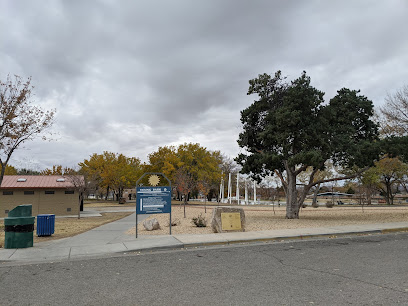
La Nueva Casita Café
Experience the authentic taste of Mexico at La Nueva Casita Café, where vibrant flavors and warm hospitality come together in Las Cruces.

Recycled Roadrunner Sculpture
Explore the Recycled Roadrunner Sculpture in Las Cruces, NM – a vibrant symbol of art, sustainability, and local culture.

Hotel Encanto de Las Cruces
Discover Hotel Encanto de Las Cruces, where luxury meets Southwestern charm in the heart of New Mexico.

Farmers & Crafts Market of Las Cruces
Explore the Farmers & Crafts Market of Las Cruces, a vibrant marketplace showcasing local produce, handmade crafts, and culinary delights in New Mexico.

Dripping Springs Natural Area
Explore the breathtaking Dripping Springs Natural Area, a stunning hiking destination in Las Cruces, New Mexico, rich in history and natural beauty.

A Bite Of Belgium
Explore authentic Belgian breakfast and brunch delights at A Bite Of Belgium in Las Cruces, where every bite is a taste of tradition.

Nopalito Restaurant
Discover the rich flavors of traditional Mexican cuisine at Nopalito Restaurant in Las Cruces, NM - a must-visit for any food lover.

Mesilla Plaza
Explore the enchanting Mesilla Plaza, a historic gem in New Mexico filled with unique shops, authentic cuisine, and a rich cultural heritage that captures the spirit of the Southwest.

New Mexico Farm and Ranch Heritage Museum
Discover the agricultural legacy of New Mexico at the Farm and Ranch Heritage Museum, where history, culture, and nature intertwine.
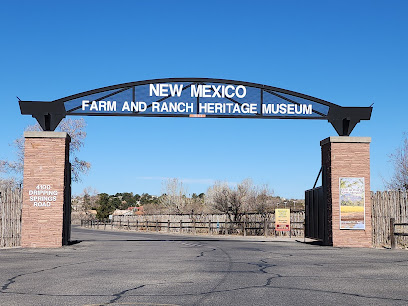
Veteran's Memorial Park
Explore Veteran's Memorial Park in Las Cruces: a serene tribute to veterans featuring beautiful memorials, recreational facilities, and a peaceful atmosphere.

Plaza De Las Cruces
Discover the vibrant Plaza De Las Cruces, a cultural hub in New Mexico, showcasing local art, delicious cuisine, and lively events for an authentic experience.

The Pecan Grill and Brewery
Experience the unique flavors of The Pecan Grill and Brewery, where American cuisine meets local craft brewing in Las Cruces, NM.
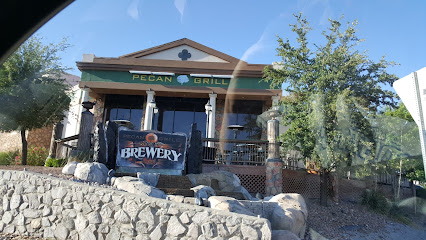
Museum of Nature & Science
Discover the Museum of Nature & Science in Las Cruces, where interactive exhibits and fascinating displays bring the wonders of nature to life.

Unmissable attractions to see
Young Park
Young Park: A tranquil oasis in Las Cruces, perfect for outdoor activities, family picnics, and nature exploration amidst stunning landscapes.

Recycled Roadrunner Sculpture
Explore the Recycled Roadrunner Sculpture in Las Cruces, a unique blend of art, sustainability, and community spirit that enchants every visitor.

Dripping Springs Natural Area
Experience breathtaking hikes and stunning views at Dripping Springs Natural Area in Las Cruces, New Mexico – a true natural wonder for outdoor enthusiasts.

New Mexico Farm and Ranch Heritage Museum
Explore the rich agricultural history of New Mexico at the Farm and Ranch Heritage Museum in Las Cruces, where tradition meets education.
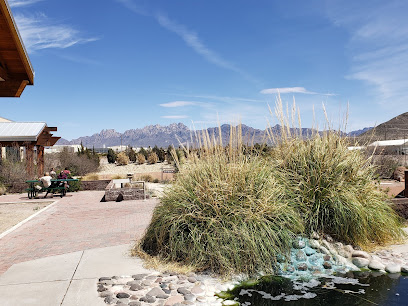
Veteran's Memorial Park
Discover Veteran's Memorial Park in Las Cruces, a serene tribute to military service surrounded by natural beauty and community spirit.

La Llorona Park
Discover the natural beauty and recreational charm of La Llorona Park in Las Cruces, NM, a perfect retreat for families and outdoor lovers.

Museum of Nature & Science
Discover the Museum of Nature & Science in Las Cruces, where the wonders of local wildlife and geology come to life through engaging exhibits and interactive experiences.

Las Cruces Regional Aquatic Center
Experience the ultimate aquatic adventure at Las Cruces Regional Aquatic Center, where fun meets relaxation in New Mexico's sun.

Pioneer Women's Park
Explore Pioneer Women's Park, a serene tribute to women pioneers, offering lush landscapes, historical insights, and recreational activities in Las Cruces, NM.

Soledad Canyon Day Use Area
Immerse yourself in the natural beauty of Soledad Canyon Day Use Area, featuring stunning hikes, picturesque landscapes, and tranquil picnic spots.

Las Cruces Railroad Museum
Explore the rich history of railroads at the Las Cruces Railroad Museum, a captivating destination for families and history enthusiasts in New Mexico.

World's Largest Chile Pepper
Explore the vibrant World's Largest Chile Pepper in Las Cruces, a unique attraction celebrating New Mexico's rich agricultural heritage.
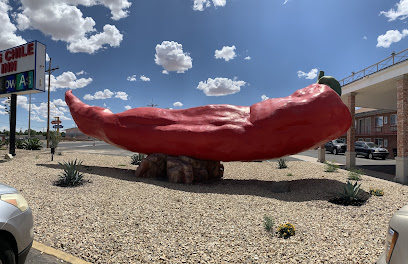
Mesilla Valley Bosque State Park
Explore the natural beauty and diverse wildlife of Mesilla Valley Bosque State Park in Las Cruces, New Mexico, a true haven for outdoor enthusiasts.

Prehistoric Trackways National Monument
Explore the ancient footprints of dinosaurs and experience the natural beauty of Prehistoric Trackways National Monument in New Mexico.

Unidad Park
Explore Unidad Park in Las Cruces: A family-friendly oasis offering lush greenery, playgrounds, and scenic walking paths for all ages.
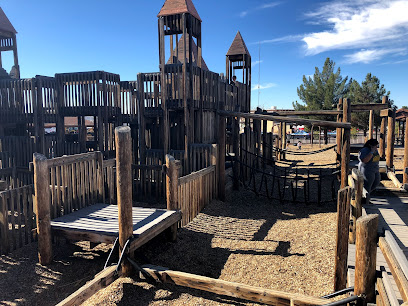
Essential places to dine
La Posta De Mesilla
Experience authentic Mexican cuisine at La Posta De Mesilla, where every dish is crafted with passion and tradition.

Si Señor Restaurant
Experience authentic Mexican flavors at Si Señor Restaurant in Las Cruces – where family dining meets fine culinary art.

Texas Roadhouse
Discover the flavors of America at Texas Roadhouse - where hand-cut steaks meet warm hospitality in Las Cruces.

Andele Restaurant
Discover the flavors of Mexico at Andele Restaurant in Mesilla – where every meal tells a story of tradition and taste.
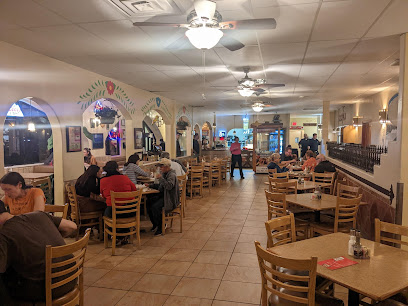
La Nueva Casita Café
Discover the vibrant flavors of authentic Mexican cuisine at La Nueva Casita Café in Las Cruces - a culinary haven for food enthusiasts.

Andele's Dog House
Discover the authentic tastes of Mexico at Andele's Dog House in Mesilla—where vibrant flavors meet warm hospitality.

Butter Smith Kitchen & Pies
Experience delightful American cuisine and irresistible pies at Butter Smith Kitchen & Pies in Las Cruces - perfect for families and food lovers alike.

D. H. LESCOMBES WINERY & BISTRO
Experience exquisite cuisine and fine wines at D.H. Lescombes Winery & Bistro in Las Cruces – where culinary excellence meets vibrant entertainment.

Double Eagle Restaurant
Discover the exquisite flavors at Double Eagle Restaurant in Mesilla, where history meets culinary excellence in every bite.
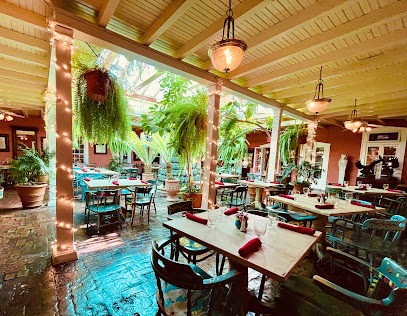
Cattle Baron
Discover mouthwatering steaks at Cattle Baron in Las Cruces—where every bite celebrates Southwestern flavors in a cozy setting.
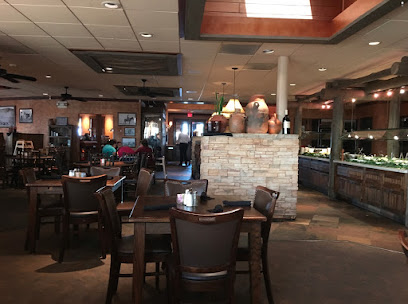
El Sombrero Patio Cafe
Discover the vibrant flavors of authentic Mexican cuisine at El Sombrero Patio Cafe in Las Cruces - a must-visit dining destination.

OMPC-The Shed
Discover authentic Southwestern American cuisine at OMPC-The Shed in Las Cruces – where every meal is a celebration of flavor.

Farley's
Experience the vibrant flavors of American cuisine at Farley's in Las Cruces – where every meal is a celebration!

Lorenzo's Italian Restaurant
Savor authentic Italian flavors at Lorenzo's Italian Restaurant in Las Cruces - pizza, pasta & seafood served with love.

The Game II - Sports Grill
Experience the ultimate sports dining at The Game II Sports Grill in Las Cruces – where great food meets thrilling live action!

Markets, malls and hidden boutiques
Mesilla Valley Mall
Discover the best shopping experience in Las Cruces at Mesilla Valley Mall, where unique stores meet delightful dining options and lively entertainment.

Kohl's
Explore Kohl's in Las Cruces for diverse, affordable shopping options, from fashion to home goods, perfect for all travelers seeking quality.

Savers
Explore Savers Thrift Store in Las Cruces, NM for vintage treasures, unique finds, and sustainable shopping in a welcoming atmosphere.

Madrid Retail Center
Discover a world of shopping, dining, and entertainment at the Madrid Retail Center in Las Cruces, where every visit is a new adventure.
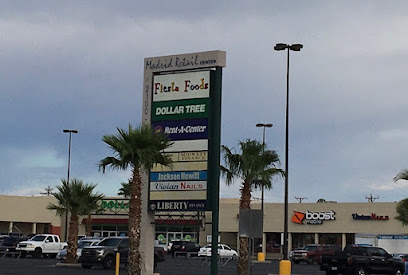
Billy the Kid Gift Shop
Discover unique souvenirs and rich history at Billy the Kid Gift Shop in Mesilla, where the spirit of the Wild West comes alive.
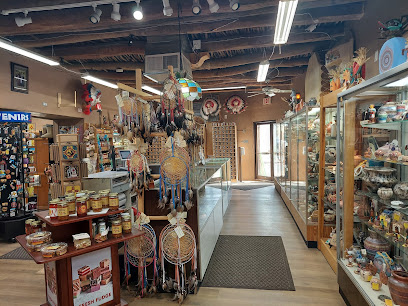
Five Below
Explore Five Below in Las Cruces, NM for trendy gifts, fun toys, and delicious candies all priced at $5 or less, perfect for every budget.

Funky Karma Incense & Tea Shop
Explore Funky Karma Incense & Tea Shop in Las Cruces for a unique selection of teas, incense, and handcrafted gifts that elevate your shopping experience.
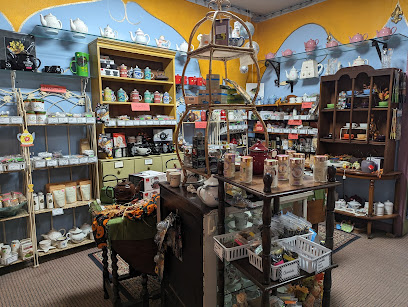
Organ Mountain Outfitters
Discover unique outdoor apparel and local craftsmanship at Organ Mountain Outfitters in Las Cruces, New Mexico, a haven for adventurers and shoppers alike.

Indigo Mermaid LLC
Uncover your spiritual path at Indigo Mermaid LLC, the premier metaphysical supply store in Las Cruces, NM, offering crystals, tarot, and more.

Wonderland Gift Shop Las Cruces
Explore Wonderland Gift Shop in Las Cruces - your go-to destination for unique tobacco products, local crafts, and exceptional service.

Jewelry Box Stores, Inc
Discover unique fashion accessories, beauty products, and more at Jewelry Box Stores, Inc in Las Cruces.

Good News Thrift Store
Explore Good News Thrift Store in Las Cruces, NM, for unique second-hand treasures while supporting local community initiatives.

New Digs Clothing Exchange
Explore New Digs Clothing Exchange in Las Cruces, NM, for trendy thrift finds and sustainable fashion in a welcoming atmosphere.

A Thrift Store
Explore the charm of A Thrift Store in Las Cruces for unique vintage finds, antiques, and budget-friendly treasures that tell a story.
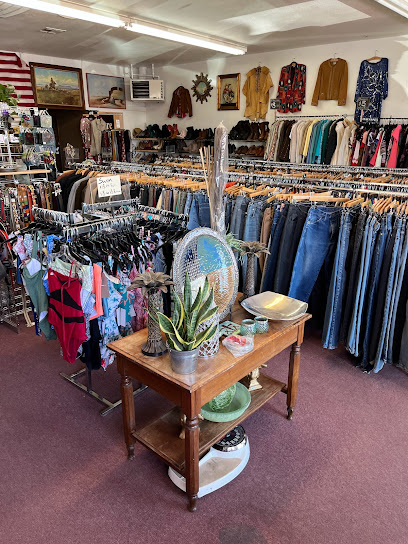
MEW AND COMPANY
Discover unique fashion and lifestyle treasures at MEW AND COMPANY, a charming boutique in Las Cruces, New Mexico.

Essential bars & hidden hideouts
D. H. LESCOMBES WINERY & BISTRO
Savor the best of New Mexico's culinary and wine culture at D. H. Lescombes Winery & Bistro, a vibrant spot for food lovers and wine enthusiasts.

Farley's
Experience the lively ambiance and delicious American cuisine at Farley's, the go-to pub and grill in Las Cruces, New Mexico.

The Game II - Sports Grill
Experience the ultimate sports atmosphere at The Game II - Sports Grill, where delicious American cuisine meets thrilling game day excitement.

The Game Sports Bar & Grill
Experience the thrill of sports at The Game Sports Bar & Grill in Las Cruces, where good food meets great excitement for every fan.

RAD Retrocade
Discover the ultimate fusion of classic arcade gaming and delicious grill fare at RAD Retrocade in Las Cruces, NM, perfect for nostalgic fun.

The Pecan Grill and Brewery
Experience the unique flavors of The Pecan Grill and Brewery, where American cuisine meets exceptional craft beer in a welcoming atmosphere.

Spotted Dog Brewery
Discover the best craft beers and delicious food at Spotted Dog Brewery in Las Cruces, New Mexico – a must-visit for every beer lover.

Blue Moon Bar & Grill
Experience the perfect blend of great food, live music, and vibrant nightlife at Blue Moon Bar & Grill in Las Cruces, NM.

Amador Patio Bar Grill
Discover culinary delights and vibrant atmosphere at Amador Patio Bar Grill in Las Cruces, featuring signature cocktails and a welcoming patio.

Palacio Bar Since 1936
Discover the vibrant nightlife and rich history at Palacio Bar Since 1936 in Mesilla, NM, where locals and tourists come together for unforgettable experiences.

Bubba's 33
Discover Bubba's 33 in Las Cruces, where American cuisine meets the thrill of a sports bar, perfect for food lovers and sports fans alike.

Icebox Brewing - N Main Taproom
Experience the best of craft beer and delicious pub fare at Icebox Brewing in Las Cruces, NM, a must-visit brewpub for every tourist.

Little Toad Creek Brewery & Distillery Las Cruces
Experience the best of Las Cruces at Little Toad Creek Brewery & Distillery, where craft beer and spirits meet a vibrant local atmosphere.
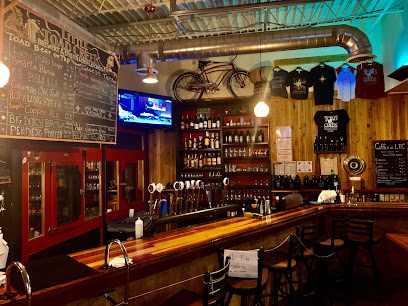
Bosque Brewing Co. University Public House
Experience the vibrant craft beer culture at Bosque Brewing Co. University Public House, where delicious food meets innovative brews in Las Cruces.

Broken Spoke Taphouse
Experience the lively ambiance and exceptional craft beers at Broken Spoke Taphouse in Las Cruces, a perfect spot for food lovers and social gatherings.

Local Phrases
-
- HelloHola
[OH-lah] - GoodbyeAdios
[ah-DYOHSS] - YesSí
[SEE] - NoNo
[NOH] - Please/You're welcomePor favor/De nada
[pohr fah-BOHR/deh NAH-dah] - Thank youGracias
[GRAH-syahss] - Excuse me/SorryPerdón/Lo siento
[pehr-DOHN/loh SYEHN-toh] - How are you?¿Cómo estás?
[KOH-moh ehs-TAHS?] - Fine. And you?Bien. ¿Y tú?
[BYEHN. ee too?] - Do you speak English?¿Hablas inglés?
[AH-blahss een-GLEHSS?] - I don't understandNo entiendo
[NOH ehn-TYEHN-doh]
- HelloHola
-
- I'd like to see the menu, pleaseMe gustaría ver el menú, por favor
[meh goos-tah-REE-ah behr ehl meh-NOO, poor fah-BOHR] - I don't eat meatNo como carne
[NOH KOH-moh KAHR-neh] - Cheers!¡Salud!
[sah-LOOD] - I would like to pay, pleaseMe gustaría pagar, por favor
[meh goos-tah-REE-ah pah-GAHR, poor fah-BOHR]
- I'd like to see the menu, pleaseMe gustaría ver el menú, por favor
-
- Help!¡Ayuda!
[ah-YOO-dah] - Go away!¡Vete!
[VEH-teh] - Call the Police!¡Llama a la Policía!
[YAH-mah ah lah poh-LEE-see-ah] - Call a doctor!¡Llama a un doctor!
[YAH-mah ah oon dohk-TOHR] - I'm lostEstoy perdido
[ehs-TOY pehr-DEE-doh] - I'm illEstoy enfermo
[ehs-TOY ehn-FAIR-moh]
- Help!¡Ayuda!
-
- I'd like to buy...Me gustaría comprar...
[meh goos-tah-REE-ah kohm-PRAR] - I'm just lookingSolo estoy mirando
[SOH-loh ehs-TOY mee-RAHN-doh] - How much is it?¿Cuánto cuesta?
[KWAHN-toh KWEHS-tah?] - That's too expensiveEso es demasiado caro
[EH-soh ehs deh-mah-SYA-doh KAH-roh] - Can you lower the price?¿Puedes bajar el precio?
[PWEH-dehs BAH-hahr ehl PREE-syoh?]
- I'd like to buy...Me gustaría comprar...
-
- What time is it?¿Qué hora es?
[keh OH-rah ehs?] - It's one o'clockEs la una en punto
[ehs lah OO-nah ehn POON-toh] - Half past (10)Las diez y media
[lahs dyehss ee MEH-dee-ah] - MorningMañana
[mah-NYAH-nah] - AfternoonTarde
[TAHR-deh] - EveningNoche
[NOH-cheh] - YesterdayAyer
[AH-yehr] - TodayHoy
[HOY] - TomorrowMañana
[mah-NYAH-nah] - 1Uno
[OO-noh] - 2Dos
[DOHS] - 3Tres
[TREHS] - 4Cuatro
[KWAH-troh] - 5Cinco
[SEEN-koh] - 6Seis
[SAYS] - 7Siete
[SYEH-teh] - 8Ocho
[OH-choh] - 9Nueve
[NWEE-veh] - 10Diez
[DYEHSS]
- What time is it?¿Qué hora es?
-
- Where's a/the...?¿Dónde está el/la...?
[DOHN-deh ehs-TAH ehl/lah] - What's the address?¿Cuál es la dirección?
[KWAHL ehs lah dee-rehk-SYOHN?] - Can you show me (on the map)?¿Puedes mostrarme (en el mapa)?
[PWEH-dehs mohss-TRAHR-meh (ehn ehl MAH-pah)?] - When's the next (bus)?¿Cuándo es el próximo (autobús)?
[KWAHN-doh ehs ehl PROH-ksee-moh (ow-toh-BOOS)?] - A ticket (to ....)Un boleto (a ....)
[oon boh-LEH-toh (ah ....)]
- Where's a/the...?¿Dónde está el/la...?
History of Las Cruces
-
Long before European settlers arrived, the region around Las Cruces was inhabited by various Indigenous peoples, including the Manso, Mescalero Apache, and Pueblo tribes. These groups thrived in the harsh desert environment, developing complex societies and sophisticated agricultural practices that utilized the Rio Grande's resources.
-
The area that is now Las Cruces saw its first European visitors in the late 16th century when Spanish explorers, led by Juan de Oñate, traversed the region. The establishment of El Camino Real de Tierra Adentro, a trade route from Mexico City to San Juan Pueblo, brought increased Spanish presence and ultimately, Spanish colonization. Missions were established, and the land became part of the Spanish Empire.
-
In 1821, Mexico gained independence from Spain, and Las Cruces became part of the newly-formed Mexican Republic. During this period, the area was less populated, serving primarily as a route for traders and travelers moving between Mexico and the northern territories.
-
The end of the Mexican-American War in 1848 saw the signing of the Treaty of Guadalupe Hidalgo, which ceded a vast portion of northern Mexico to the United States, including what would become southern New Mexico. This treaty significantly altered the demographics and political landscape of the region, leading to increased American settlement.
-
Las Cruces was officially founded in 1849 when the U.S. Army began planning a new town to serve as a military outpost and agricultural hub. The name 'Las Cruces' translates to 'The Crosses,' though the origin of the name remains a subject of debate. Some believe it refers to graves marked with crosses found in the area, while others think it may refer to the intersection of important travel routes.
-
During the American Civil War, New Mexico was a contested territory. In 1862, the Battle of Valverde took place near Las Cruces, where Confederate and Union forces clashed. Although the Confederates initially won the battle, they were eventually forced to retreat, and the Union maintained control over the territory.
-
The arrival of the Atchison, Topeka, and Santa Fe Railway in the late 19th century transformed Las Cruces from a small agricultural community into a bustling trade center. The railroad facilitated the transport of goods and people, spurring economic growth and attracting new settlers to the region.
-
World War II brought significant changes to the region with the establishment of the White Sands Proving Grounds (now White Sands Missile Range) in 1945. This military testing facility played a crucial role in the development of missile and space technologies, including the testing of the first atomic bomb at the nearby Trinity Site. The facility continues to be a major employer and driver of technological innovation in the area.
-
Founded in 1888 as the Las Cruces College, New Mexico State University (NMSU) has grown to become a major educational institution in the state. It was renamed NMSU in 1960 and has since been a center for research, education, and cultural activities, significantly contributing to the intellectual and cultural fabric of Las Cruces.
-
Today, Las Cruces is a vibrant city known for its rich cultural heritage, diverse population, and dynamic economy. The city celebrates its history through numerous festivals, museums, and historic sites, while also embracing modern advancements in technology, education, and the arts.
Las Cruces Essentials
-
Las Cruces is located in southern New Mexico. The nearest major airport is El Paso International Airport (ELP) in Texas, approximately 50 miles away. From El Paso, you can rent a car or take a shuttle service to Las Cruces. Alternatively, Albuquerque International Sunport (ABQ) is about 225 miles north of Las Cruces and offers additional flight options. Greyhound buses also serve Las Cruces, providing convenient intercity travel.
-
Las Cruces is a relatively small city, and many attractions are accessible by foot or bicycle. The RoadRUNNER Transit system provides local bus service throughout the city. Taxis and ride-sharing services like Uber and Lyft are also available. For those looking to explore the surrounding areas, renting a car is a convenient option. Major highways such as I-10 and I-25 make driving straightforward.
-
The official currency is the United States Dollar (USD). Credit and debit cards are widely accepted in Las Cruces, including in hotels, restaurants, and shops. ATMs are plentiful throughout the city if you need to withdraw cash. It's advisable to carry a small amount of cash for use in smaller establishments or rural areas where card payments might not be accepted.
-
Las Cruces is generally a safe city for tourists, but it's always wise to take standard precautions. Avoid walking alone at night in unfamiliar areas and keep an eye on personal belongings in crowded places. Some neighborhoods, such as certain parts of the Mesquite Historic District, have higher crime rates, so it's best to stay vigilant and avoid these areas after dark.
-
In case of an emergency, dial 911 for immediate assistance. The local police and fire departments are competent and responsive. MountainView Regional Medical Center and Memorial Medical Center are the primary hospitals in Las Cruces for medical emergencies. Pharmacies are available for minor health issues. It's recommended to have travel insurance that covers medical emergencies.
-
Fashion: Do dress comfortably and in layers, as temperatures can vary. Casual attire is widely accepted, but avoid overly revealing clothing. Religion: Do respect local customs and traditions. New Mexico has a rich cultural heritage including Native American and Hispanic influences. Public Transport: Do be respectful and courteous to fellow passengers. Don't play loud music or engage in disruptive behavior. Greetings: Do greet people with a friendly 'hello' or 'hi.' A handshake is common in formal settings. Eating & Drinking: Do try local cuisine, including green chile dishes. Don’t skip tipping; it's customary to leave a tip of 15-20% in restaurants.
-
To experience Las Cruces like a local, visit the Farmers & Crafts Market of Las Cruces, held every Wednesday and Saturday morning. Engage with the vendors and try local produce and crafts. Take a stroll through the Mesilla Plaza, a historic area with unique shops and restaurants. Visit local wineries and taste some New Mexico wines. Don’t miss the Organ Mountains-Desert Peaks National Monument for hiking and breathtaking views.
Trending Landmark in Las Cruces
-
Mesilla Valley Mall
-
Young Park
-
La Nueva Casita Café
-
Recycled Roadrunner Sculpture
-
Hotel Encanto de Las Cruces
-
Farmers & Crafts Market of Las Cruces
-
Dripping Springs Natural Area
-
A Bite Of Belgium
-
Nopalito Restaurant
-
Mesilla Plaza
-
New Mexico Farm and Ranch Heritage Museum
-
Veteran's Memorial Park
-
Plaza De Las Cruces
-
The Pecan Grill and Brewery
-
Museum of Nature & Science
Nearby Cities to Las Cruces
-
Things To Do in White Sands
-
Things To Do in El Paso
-
Things To Do in Truth or Consequences
-
Things To Do in Ruidoso
-
Things To Do in Socorro
-
Things To Do in Roswell
-
Things To Do in Albuquerque
-
Things To Do in Bisbee
-
Things To Do in Bernalillo
-
Things To Do in Santa Fe
-
Things To Do in Sante Fe
-
Things To Do in Las Vegas
-
Things To Do in Tucson
-
Things To Do in Los Alamos
-
Things To Do in Gallup










